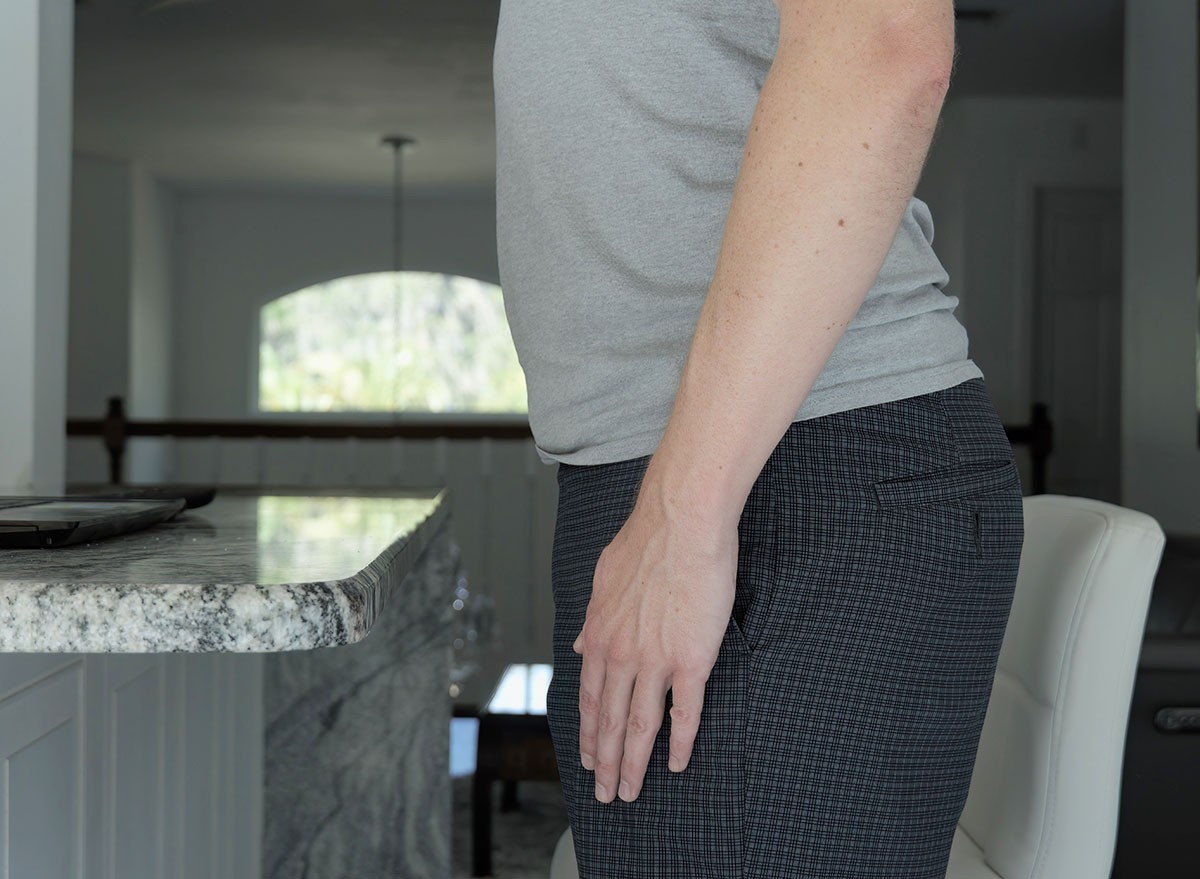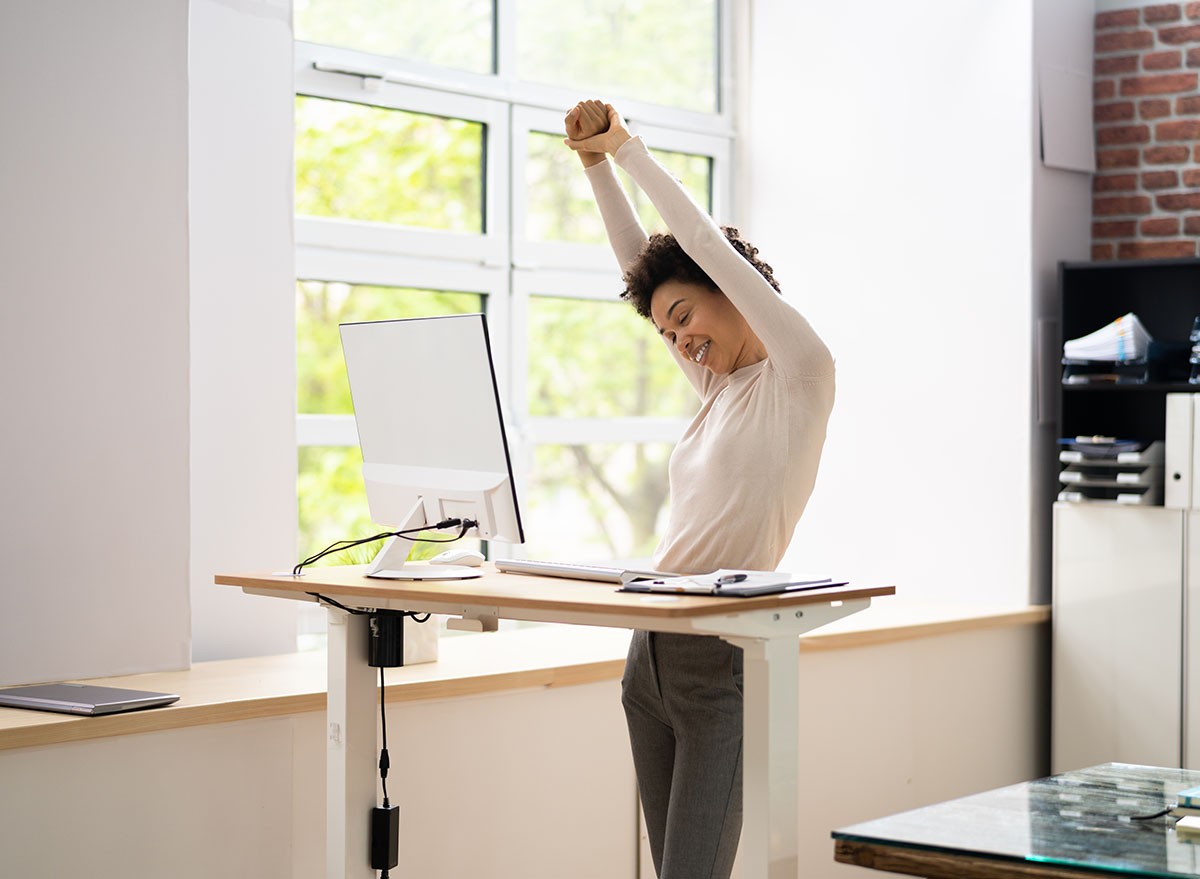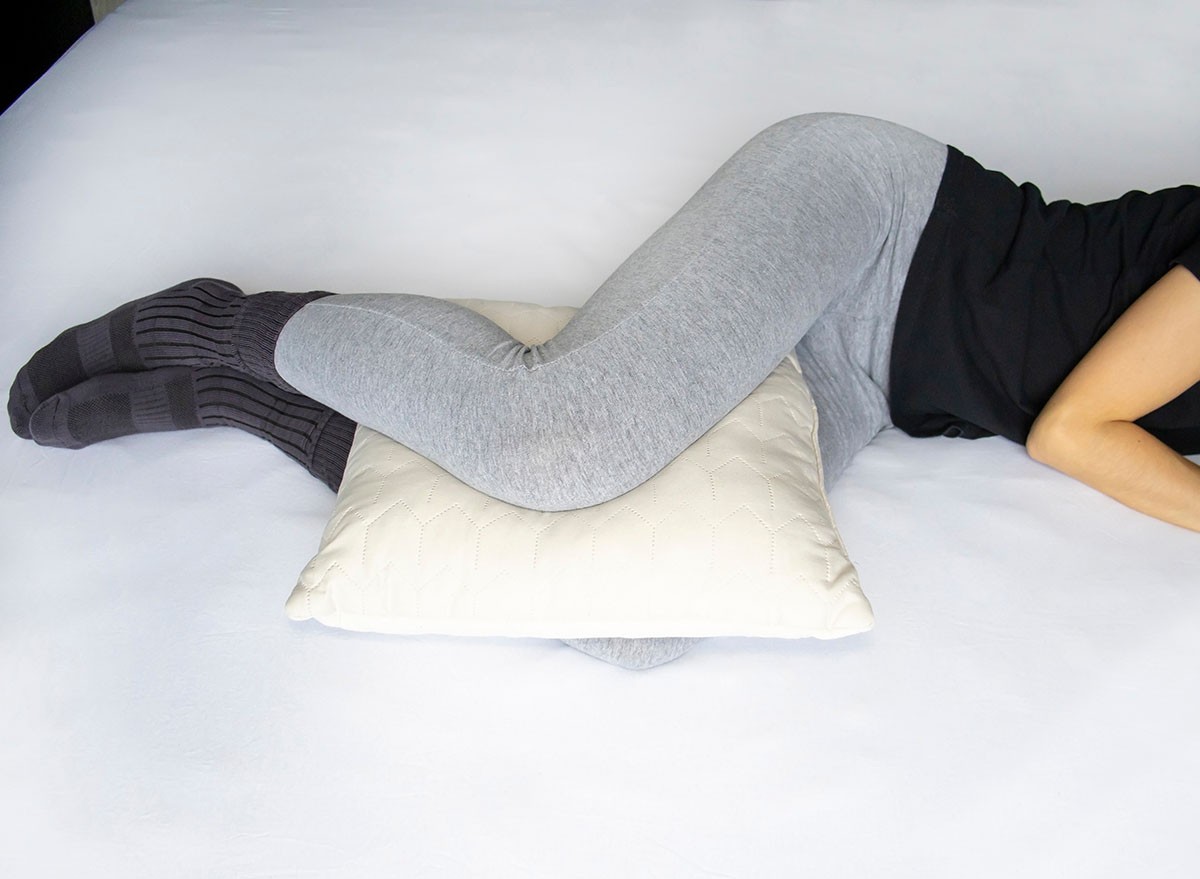5 Daily Habits Secretly Ruining Your Lower Back, According to a Physical Therapist

Back pain is one of the most common complaints physical therapists hear, affecting millions of people daily. Dr. Jared Beckstrand, a Doctor of Physical Therapy specializing in orthopedic rehabilitation and athletic performance, has seen this pattern repeatedly in his practice. As the creator of the Tone and Tighten YouTube channel, Dr. Beckstrand shares expert advice on alleviating various types of pain. "Most patients make good progress until suddenly they report a major setback," Dr. Beckstrand says in his post. "Almost always, it's due to one of these five common habits." Read on to discover what might be sabotaging your recovery and the simple solutions that could provide immediate relief.
Mistake #1: Poor Sitting Habits
Sitting for extended periods is the number one culprit behind back pain flare-ups. "Whether at your desk, in your car, or relaxing on the couch, prolonged sitting puts tremendous pressure on your spine," Dr. Beckstrand explains. Most people don't maintain proper posture while sitting, creating a rounded C-shape in the lower back. This position increases pressure on the front of the vertebrae, causing discs to bulge backward where nerve structures like the sciatic nerve are located.
Solution #1: Take Standing Breaks

Take regular standing breaks throughout your day. Dr. Beckstrand recommends standing for about five minutes every hour, even gently bending backward to relieve pressure. If you must sit, support your lower back with a small towel to maintain a neutral spine position rather than that harmful C-shape. "Simply standing up, maybe bending over backwards a little bit is going to be crucial in helping you to feel better and in taking breaks just throughout your day," says Dr. Beckstrand.
Mistake #2: Harmful Stretching Routines

Many people instinctively stretch when feeling back tightness, but certain stretches actually worsen bulging disc problems. "The most common culprit that I see are any stretches that promote this flexion or this forward rounding activity," Dr. Beckstrand warns. Common culprits include hamstring stretches or yoga's child's pose – anything that rounds your back forward by bringing your chest toward your knees places significant stress on discs.
Solution #2: Extension-Based Movements

Focus on extension-based activities instead of forward-bending stretches. "This is probably my favorite is going to be the cobra pose," Dr. Beckstrand recommends. Start by lying on your stomach with elbows beneath your shoulders, holding for 10 seconds, then resting for 10 seconds. Repeat this about 10 times. "Eventually we want to get up even into this full cobra position where my elbows are actually locked out. That's a really good stretch for my lower back," explains Dr. Beckstrand. This puts pressure on the back of the disc, helping to relocate it properly and alleviating sciatic symptoms.
Mistake #3: Doing the Wrong Core Exercises

Core weakness is frequently blamed for back pain, but many people choose exercises that worsen their condition. "The number three thing to avoid are the wrong core exercises, specifically anything where you're folding forward," says Dr. Beckstrand. He specifically points out that "sit-ups or exercises like a Russian twist" are probably the two most common culprits that aggravate lower back pain.
Solution #3: Focus on Posterior Chain Strength

Focus on strengthening your posterior chain (back side) before aggressively working your abs. "My favorite exercise for that is the bridges," Dr. Beckstrand suggests. "What you're going to do is lay down on your back with your knees bent. I'm going to squeeze my glutes, contract my glute muscles, and raise my hips up towards the ceiling." Hold for three seconds before slowly lowering back down. This engages your core muscles without the harmful flexion that increases pressure on your lumbar spine.
Mistake #4: Compression-Heavy Exercises

Certain strength training exercises can significantly worsen bulging disc problems by increasing spinal compression. "Anything that's going to increase compression in your spine should probably be avoided," Dr. Beckstrand cautions. "I'd say that barbell squats are the number one culprit for this, but I also like to recommend people avoid exercises where they're bending over and picking up a load. So this is going to be your deadlifts, your bent over rows, exercises like that."
Solution #4: Try Spinal Decompression

Instead of compression-heavy exercises, try decompression techniques. "I tell people to swap out that barbell for a pull-up bar and do some decompression to your spine," Dr. Beckstrand recommends. Hang from a pull-up bar with your toes lightly touching the floor, allowing your spine to elongate while you relax your back muscles. "What we're doing there is we're actually taking the pressure off of that disc, offering it a little bit of some relief as well," explains Dr. Beckstrand.
Mistake #5: Poor Sleep Positioning

Your sleeping position can dramatically impact how you feel when you wake up. "The most common culprit that I see on this one is those who sleep on their side with their knees tucked up into their chest," Dr. Beckstrand explains. "Again, we're putting the spine in this flexed position, puts a lot of pressure on the nerve in the back, and then we're staying there for a prolonged period of time."
Solution #5: Support Your Spine During Sleep

For side sleepers, Dr. Beckstrand recommends: "If you do sleep on your side, what I want you to do is put a pillow in between your knees. That's going to help to keep your spine and pelvis in a more neutral alignment." Keep just a soft bend in your hips and knees rather than tucking them tight to your chest. "The other thing that you can do, if you can switch positions, I like back sleeping or sleeping on your back for this problem with a couple of pillows under your knees," advises Dr. Beckstrand. This position provides optimal spine support, unlocks tight hip flexors, and decreases pressure throughout your back.
Take Control of Your Recovery Today

Back pain doesn't have to dictate your life. By implementing these expert-recommended adjustments, you can take active steps toward recovery. "So the number one thing to avoid sitting with poor posture for long periods of time, stand up and take regular breaks or improve your posture with support," Dr. Beckstrand notes. Start with the modification that seems most relevant to your situation, then gradually incorporate the others. Small improvements compound over time, eventually leading to significant pain reduction and increased function. And if you enjoyed this article, don't miss 12-3-30 Walking Method: 20 Proven Tips to Lose Weight Faster.




